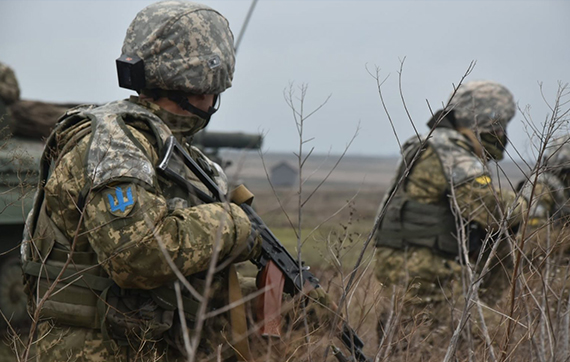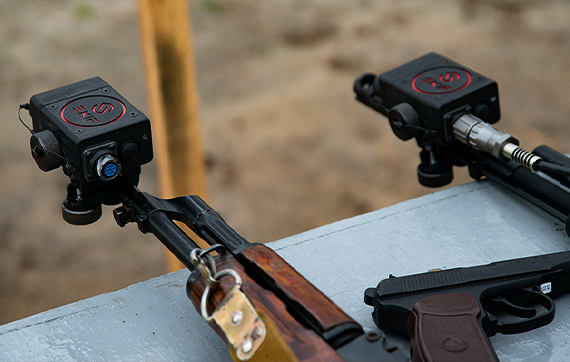With the SKIFTECH system you can:
01
Practice firing from pistols, machine guns, rifles, grenade launchers, and other small arms.
02
Train soldiers to neutralize enemy manpower, and low flying targets.
03
Prepare soldiers for special operations of different difficulty levels, both indoors and outdoors.
04
Practice the defense of important positions/targets, or actions on enemy positions.
05
Carry out a detailed analysis of each soldier's performance and track real-time movements.
Training with the SKIFTECH system provides:
SKIFTECH personal kits consist of:
01
A hinged or integrated laser emitter for small arms.

02
Hit-capturing devices: the vest, the headband, the helmet case.
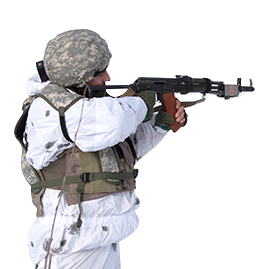
03
“Dzhmil” Stress Belt.

The hinged laser emitter
It is mounted on the barrel of an assault rifle, machine gun, pistol, or other firearm.
Training with the hinged emitter can take place in two modes:

Using blank cartridges
The laser emitter will fire synchronously with the blank shot. This mode uses standard blanks for that particular weapon.Without the use of blank cartridges
Instead of a usual magazine a hinged emitter magazine is used. When you press the trigger, laser pulses are sent, and the speaker located in the magazine makes an audible indication of the shot.The advantages of using a hinged emitter:
We use a regular soldier’s weapon for training (pistol, machine gun, assault rifle, sniper rifle, grenade launcher, etc.).
The ability to train with blank cartridges for a sense of a real recoil.
The hinged emitter can be quickly and easily reattached to other weapons.
The integrated emitter
Developed on the basis of customer specifications, the laser emitter complex can be integrated into the model of a machine gun, assault rifle, pistol, and other types of firearms.
The benefits of training using an integrated emitter:
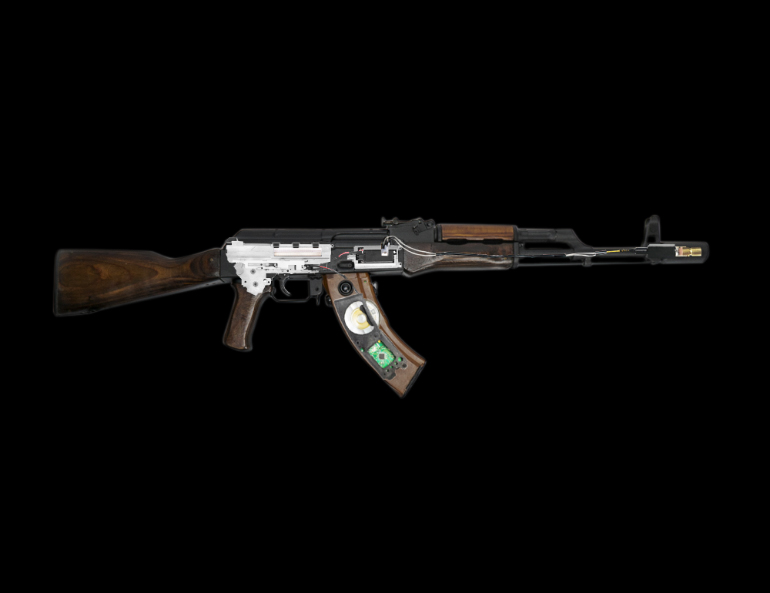
The devices with hit sensors
Shots from a hinged or integrated emitter are captured by special damage sensors. The sensors are located on the vest, headband, or helmet (cases) that are included in the personalized kit of the soldier.
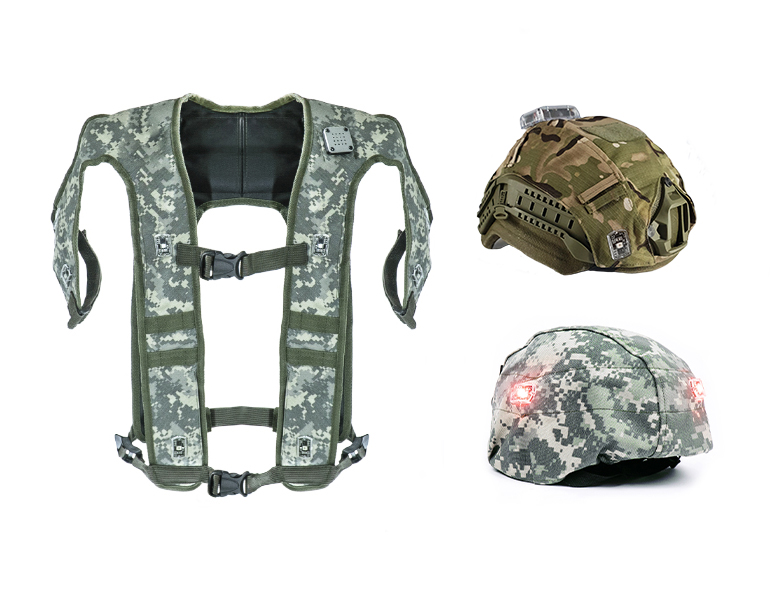
A vest with the hit sensors
The vest is worn over a uniform or a bulletproof vest. In addition to the damage sensors, it has a control unit, sound indicators and GPS module.The tactical helmet case with the hit sensors
Is put on a fighter's tactical helmet for training.The headband with the hit sensors
The headband can be used instead of the helmet. It can be put over a hat or on the soldier's head.The basic qualities of the devices with the hit sensors:
The possibility to train in any weather conditions.
Differential damage allows you to realistically record conditional injuries.
The universal size of the hit-capturing device allows you to put it over any military outfit.
“Dzhmil” Stress Belt
When the soldier is hit, the bracelet transmits an electrical impulse of adjustable power to the body. An electrical impulse causes short-term muscle contraction, allowing the soldier to feel the hit.
The main qualities of the “Dzhmil” stress belt:
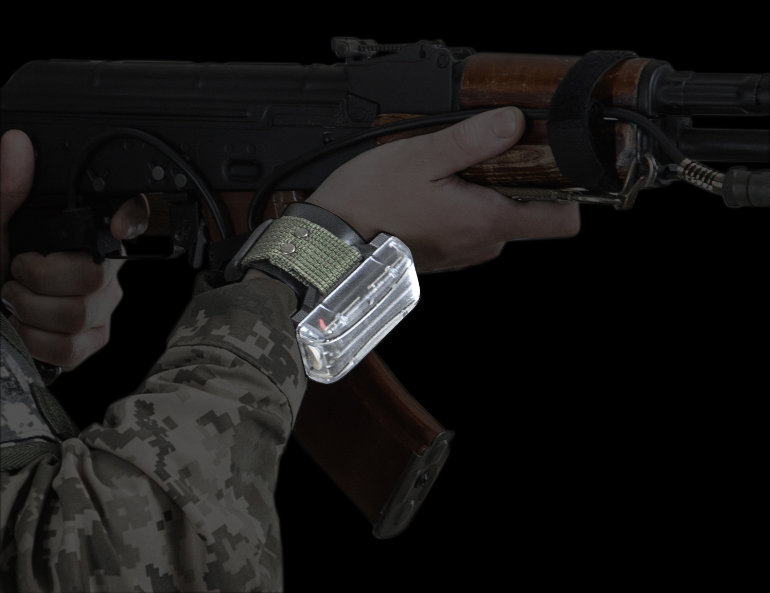
Software
The kits are managed using a single device (tablet).
The software allows you to:
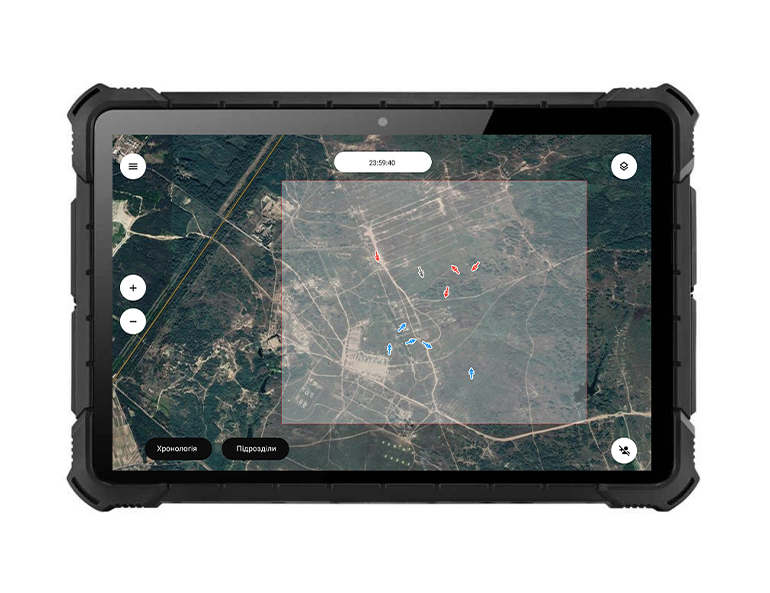
*By custom order, the software can include a statistical capture of other parameters.
